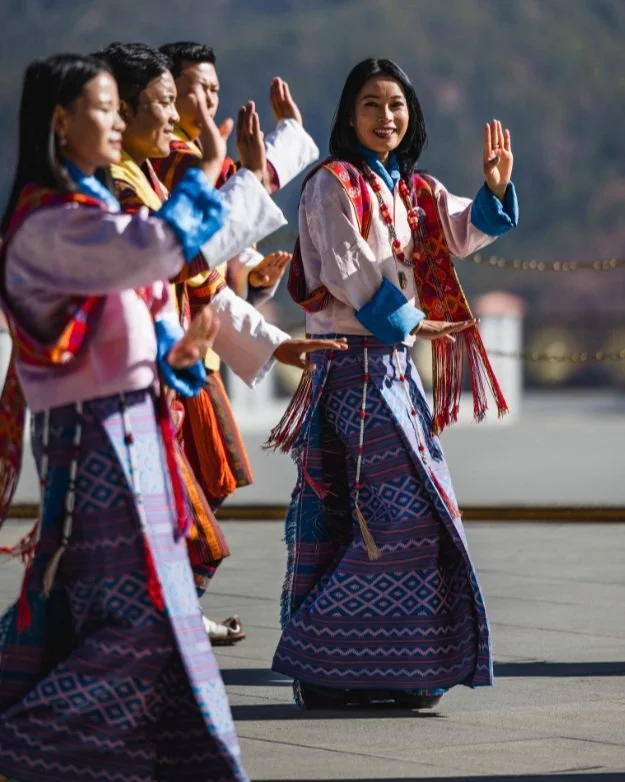Whether it’s climbing Kilimanjaro or day hiking your way around Iceland, one of the most common questions we get is: How should I train for my adventure? We love this question because it means you get it - the more prepared you are, physically and mentally, the more you’ll be able to enjoy the experience and really take it all in!
So, we’re here to make it easy and fun for you! (After all, we believe the prep can and should be a part of the fun of traveling.) Check out this 6 step training plan from WHOAlum and professional Adventure Coach, Becki Rupp, full of expert advice so you can avoid the pitfalls and get the most out of your upcoming epic trek.
STEP 1
Make a Game Plan
When you should start training depends on 3 main factors: 1) The trip’s itinerary 2) Your current activity level 3) The amount of time you have in your schedule to train.
For most multi-day hikes with a lot of elevation change and challenging terrain - Kilimanjaro, Peru, Patagonia, Cotopaxi - reasonably active women would be wise to allow at least 3 months to get ready unless you’re hiking 10-15 miles with 3,000+ feet of elevation gain/loss every weekend, on back-to-back days. If so, rock on!
Add a few more months to build up a solid cardio and strength base for those who are intermittently active or haven’t been out and about much due to illness or injury. If you have limited time to dedicate to training – a crazy work schedule, intense family responsibilities, other life stuff – then add another month or two. This gives you a cushion for those weeks when the shit hits the fan, and your training plan goes on the back burner. Ask any of our WHOAlums for their wisdom and they’ll all agree, start earlier than you think you’ll need to.
STEP 2
BREAK-IN YOUR GEAR
The gear you’ll be taking on your trip should accompany you on your training hikes for at least a month before you leave.
With footwear, start even sooner – at least 2 months in advance, so if they aren’t working for you, there’s time to replace them and break in the new ones. Be sure to test your socks with your boots too, it’s the combo that can create blisters.
During the trip, your pack will become a part of you for several days. Get it fitted at your local outdoor store, ideally full of the stuff you’re bringing in it (or at least the approximate weight). Again, dial it in a month or two before you go.
Trekking poles will be mandatory for your adventure if your hike includes steep or rocky terrain. If you don’t already have a pair, aim to get them at least a month in advance so you have time to practice with them. Here are some tips for using trekking poles.
STEP 3
PREP YOUR LEGS FOR UP & DOWNHILL
One of the simplest ways to prepare your legs for your trip is by walking up and down inclines or stairs. This is especially important if you’re going to Peru, Patagonia, or Tour du Mont Blanc as there is a lot of elevation gain and loss. And even more important if you live in the flatlands.
Start with just a few flights 2-3 times per week – up, down and sideways. Yes, sideways! Simply turn toward the railing and go up and down with your right leg leading for a set, then switch and lead with your left. It might seem silly, but you’ll work a completely different set of muscles.
Add another flight of stairs each week, and as the trip gets closer, wear your boots and pack for your stair sessions. Your quads, calves, hips, and glutes will thank you on your trip!
STEP 4
Strength Train for Stamina
If you’re not already doing resistance training (also known as strength training), now is a great time to start! Hiking is a full-body activity, especially when carrying a pack, trekking poles, and navigating rock-strewn mountain paths. So I recommend building strength all over. Stronger muscles will increase your stamina and resilience and reduce your risk of injury.
Core strength is the key to a more comfortable hike, especially if you struggle with low back pain. The extra weight of a pack, the twisting movements, and uneven steps put a lot of torque on your torso. If you enjoy Pilates or have been curious about trying it, include one or two sessions a week. If you’d rather DIY, planks and seated twists are key moves to incorporate into your routine.
Remember to invest some time in training your upper body as well. When you put on your backpack for the umpteenth time, you’ll be glad you did. Good old-fashioned pushups are a great way to build your chest, back and arm muscles. Start against the wall or on your knees and do as many as possible a couple days per week.
You can even use your backpack for strength training! Here’s a workout using just body weight and a backpack.
STEP 5
Get Outside and Hike!
You probably guessed that hiking is included in a training plan for a hiking trip. But WHOA hikes aren’t just any stroll along a dirt path. They are hikes that will awe you, make you more mindful, and transform you. That’s partly why you signed up, right?!
To prepare physically and mentally for the challenging—and rewarding—terrain, you may need to get a bit creative. This is especially true if you live in a place where the highest hills are barely bumps. I'm looking at you, Florida.
Once you have a solid base of walking and hiking distances similar to the average day on your trip, seek out tougher terrain. Find trails with rocks and roots. If possible, set aside a weekend (or two) for a trip to a place with more difficult trails.
Basically, push your comfort level several times before you go, but remember to be safe about it. If you don’t have family or friends who hike at that level, check out group hikes through MeetUp, Unlikely Hikers or local trail organizations.
STEP 6
Stay Positive & Visualize Your Goal
While you’re working on the physical prep for the trip, don’t forget to prepare yourself mentally! What you’re doing is a big freaking deal, and even though you’re excited about your upcoming adventure, it may bring up some uncomfortable feelings.
For some, the challenge is gaining confidence that they’ll be able to do what’s on the itinerary. For others, sticking to a training plan when they’re doing it on their own is tough. Others may be nervous about specific parts of the trip, such as heights, exposure, altitude, and being slow.
Working with a coach (like me 😊) can help you work through what bubbles up during the pre-trip journey. I’ll help you tap into your strengths, channel your motivation, and work through any rough patches along the way. After all, you want to feel on top of the world when you get there!
About the Author
Becki Rupp is the founder of Trailblazer Wellness, and is a certified personal trainer (ACSM) and adventure coach, whose vision is to empower more women to pursue their adventure travel dreams by helping them gain the strength, stamina and confidence to make the most of their adventures and life. She supports her clients through a transformation, from being uncertain about their upcoming adventure to being thoroughly excited and confident.
Becki has created dozens of customized training plans for treks including Kilimanjaro, the Salkantay and Inca Trail routes in Peru, the W trek in Patagonia and more.
Becki has hiked, biked, sea kayaked and explored 40+ US states as well as several countries in Europe, Central America and South America. She guided sea kayak tours in the sounds and rivers of North Carolina and Virginia, and searched mountains and forests for missing people in five states as a member of wilderness search and rescue teams. She currently lives in the central Colorado mountains.
Looking for help with any aspect of preparing for your upcoming adventure? Set up a free 30-minute consultation!













